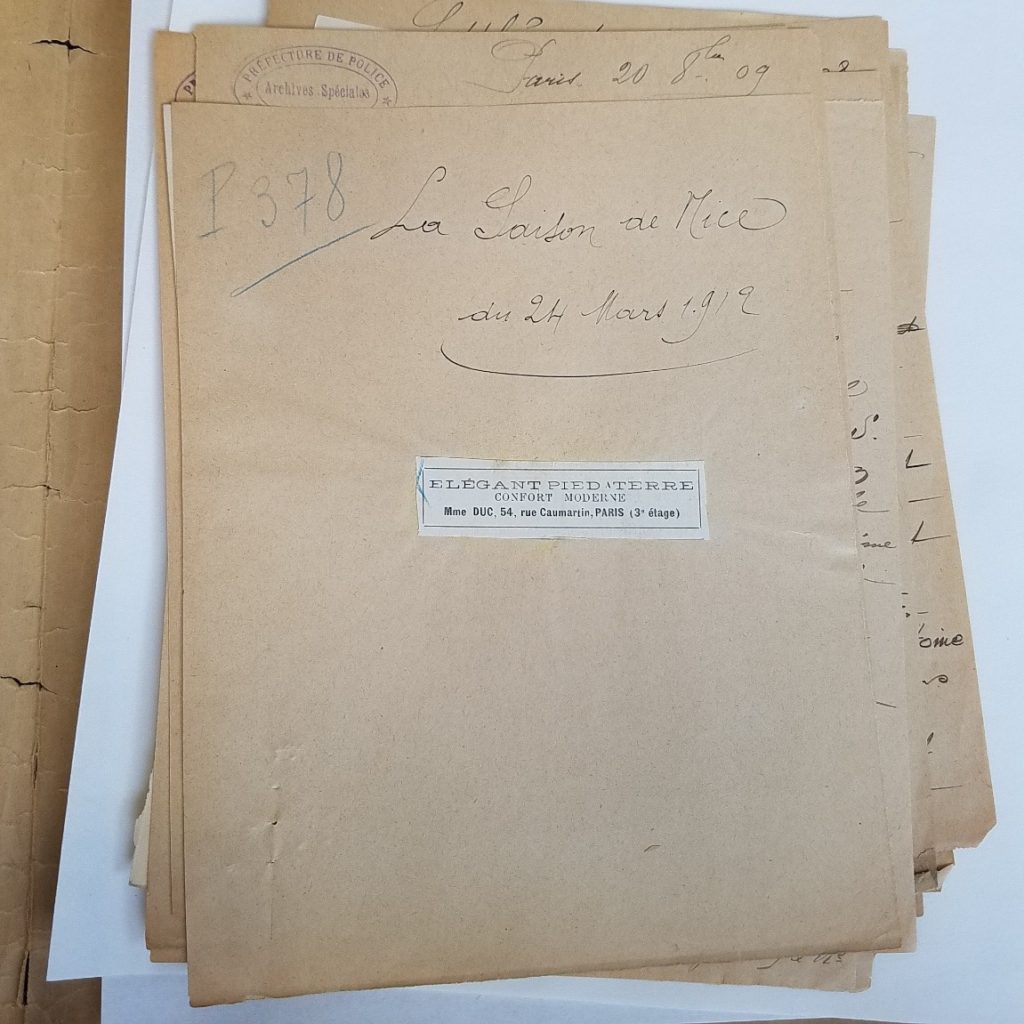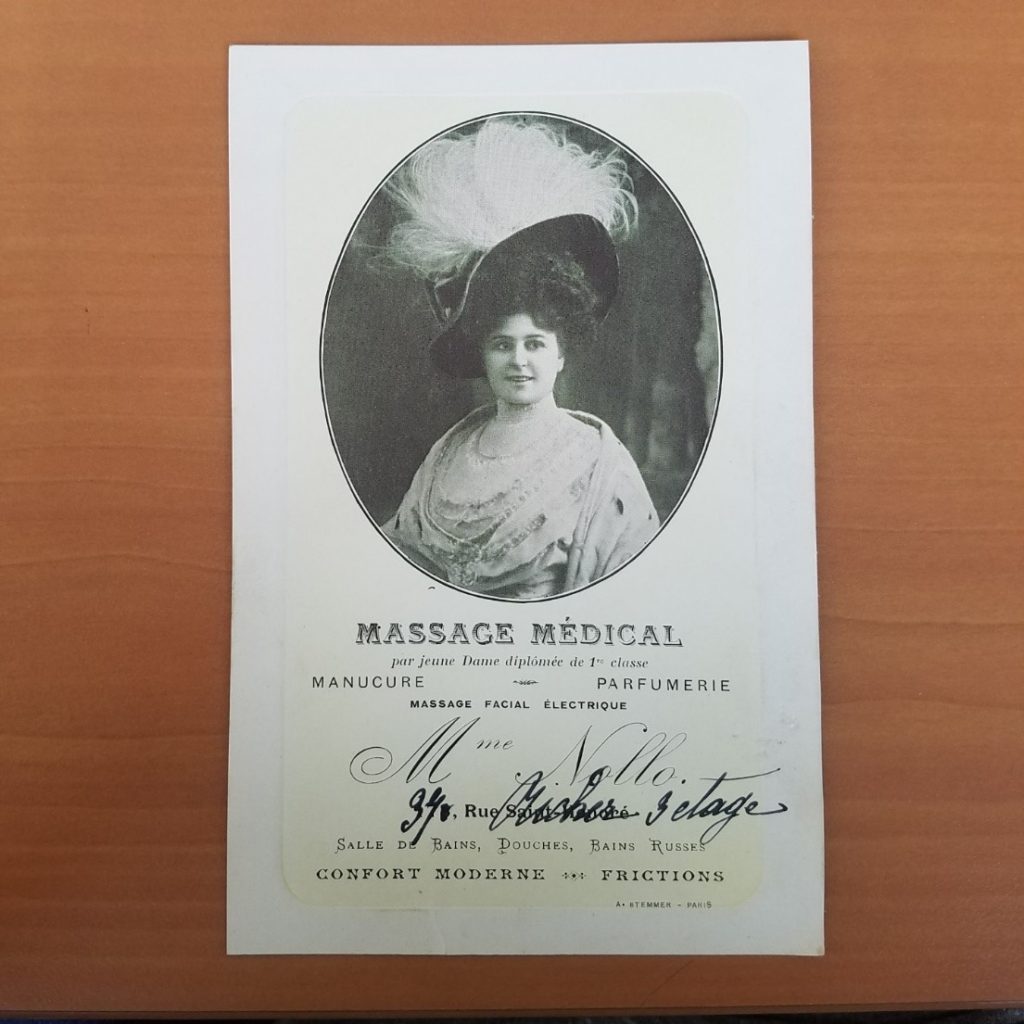Each month, a researcher shares their experiences of using a particular archive. The overall aim of this section is to create a database of the different archives available to those working on French and Francophone studies that will be of help particularly to students just starting out in research.
Hannah Frydman is a PhD candidate in European history and women’s and gender history at Rutgers University-New Brunswick. Here she talks about her research at the Archives de la Préfecture de Police
A brisk five-minute walk from metro Hoche, just one stop past Porte de Pantin on the line 5 and the possibility of a picnic lunch in the Parc de la Villette on a nice day, lies the unassuming and almost unmarked Archives de la Préfecture de Police. In another post, Chris Millington has explained the logistics of using this archive—including finding and entering the building. Luckily, coming and going (for example, when the outer gate is not opened for you remotely as you leave, a button must be pressed, counterintuively, with your foot…) are the most confusing things about working here. Prior to your visit, it is useful to consult the “état sommaire des fonds,” available on the archive’s website. More detailed information about holdings, however, is only available on the three computers located on site, so be sure to budget a significant amount of time to investigating the finding aids when you arrive.

I have spent a lot of time at the Archives de la Préfecture, consulting sources on a wide range of topics that seemed likely to intersect in some way with my doctoral research on women’s use of classified advertising during the Third Republic. I looked at materials on the press, occult sciences, homosexuality, abortion, obscenity, and the investigation of the serial killer Landru, who found his victims through the personals. Each of these boxes contained interesting tidbits, but they all seemed to pale in comparison to the archives’ documentation on prostitution. I was blown away by the scale and scope of this material, although I probably shouldn’t have been. Moral and hygienic concern about prostitution, translated into police surveillance and action, was a defining and well-studied feature of Paris’s history, especially in the nineteenth and early twentieth centuries. Little wonder that rich documentation exists.
These archives have been used to write histories of prostitution (e.g. Alain Corbin’s 1978 Les filles de noce) and of urban sexuality (most recently, Andrew Israel Ross’s 2019 Public City/Public Sex). Ross has even written an article about these collections themselves and the ways in which they ask us to rethink the way we imagine (and categorize) the sexual past (see his “Sex in the Archives: Homosexuality, Prostitution, and the Archives de la Préfecture de Police de Paris,” French Historical Studies, 40, no. 2 (April 2017): 267-290).
These archives, nonetheless, have many other stories to tell and will be of particular interest to historians of sexuality and gender, urban historians, historians of policing, labor historians, and business historians. While sources on police regulation of sexuality in person and in print can be found scattered in many series, including BB, DA, and DB (a keyword search for such terms as “prostititution,” “obscénités,” and “moeurs,” of the on-site finding aids will find specific locations), the largest block of sources on this topic can be found in the new sous-série JC (Brigade mondaine, puis brigade de repression du proxénétisme). As of Spring 2019, JC was still “en cours de classement” as part of a reorganization of documents previously known as BM. It will (with a few exceptions) be organized into two major parts. The first will be searchable by name and is made up of individual administrative dossiers for tenancières de maisons closes (brothel madams), comprising 1598 dossiers from 1870-1940. The second is organized by address and is made up of police reports investigating soliciting complaints, comprising 2671 dossiers, also from 1870-1940. These documents are freely accessible after a period of one hundred years, so, for now, they will be most useful for scholars working on the first five decades of the Third Republic.

While the finding aids were not yet accessible during my visit earlier this year, archivists helped me get a sense of the contents of these files by pulling documents regarding addresses of interest to me because they had appeared in classified advertising. For example, I was able to consult documents regarding 23 rue Richer (9th arrrondissement) that revealed that Marie Antoine (JC T2), Marie Gabrielle Assier (JC T2), Angèle Bosredon (JC T8), and Marie Lemoine (JC T43) were all known to have frequented this address in the first decade of the twentieth century. We learn, for example, that Marie Antoine went to the police of her own volition to declare the opening of an apartment-based brothel. We also learn a wide range of details about her life and business, including when and where she was born, how big the apartment was, what floor it was on, how many exits it had, how much she paid in rent, what hours the brothel was open, how many women worked for her, what doctors attended them, how much clients paid, and more. Files also contain police investigations into women who were suspected of engaging in sexual commerce, letters of denunciation (often from neighbors), and, of particular interest to me, information about and examples of sex workers’ and madams’ advertising practices, which, in some cases, were what had drawn police attention to them in the first place.
Thank you very much for this, Hannah!
Hannah Frydman is a PhD candidate in European history and women’s and gender history at Rutgers University-New Brunswick. Her research excavates the history of Parisian classified advertising in the age of the mass press, exploring how sex workers, queer people, fortune tellers, adulterers, abortionists, and others made use of this communication technology and how this appropriation of the newspaper posed thorny questions for the republican project and its promised freedoms.


